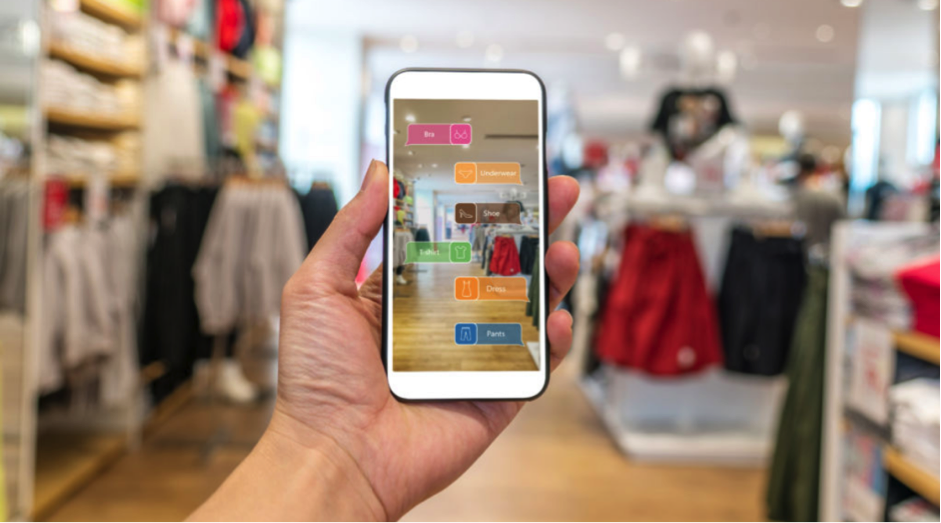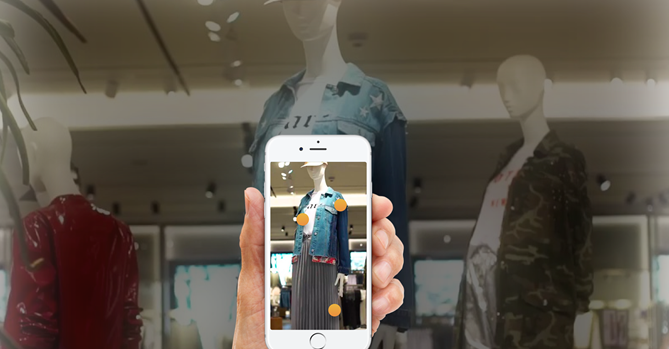By Peter Diamandis
AI and broadband are eating retail for breakfast. In the first half of 2019, we’ve seen 19 retailer bankruptcies. And the retail apocalypse is only accelerating.
What’s coming next is astounding… Why drive when you can speak? Revenue from products purchased via voice commands is expected to quadruple from today’s US$2 billion to US$8 billion by 2023.
VR, AR and 3D Printing are converging with AI, drones and 5G to transform shopping on every dimension. And as a result, shopping is becoming dematerialised, demonetised, democratised, and delocalised… a top-to-bottom transformation of the retail world.

A Day in the Life of 2029
Welcome to April 21, 2029, a sunny day in Dallas. You’ve got a fundraising luncheon tomorrow, but nothing to wear. The last thing you want to do is spend the day at the mall.
No sweat. Your body image data is still current, as you were scanned only a week ago. Put on your VR headset and have a conversation with your AI.
“It’s time to buy a dress for tomorrow’s event” is all you have to say.
In a moment, you’re teleported to a virtual clothing store. Zero travel time. No freeway traffic, parking hassles, or angry hordes wielding baby strollers.
Instead, you’ve entered your own personal clothing store. Everything is in your exact size… And I mean everything. The store has access to nearly every designer and style on the planet.
Ask your AI to show you what’s hot in Shanghai, and presto— instant fashion show. Every model strutting down the runway looks exactly like you, only dressed in Shanghai’s latest.
When you’re done selecting an outfit, your AI pays the bill. And as your new clothes are being 3D-printed at a warehouse – before speeding your way via drone delivery – a digital version has been added to your personal inventory for use at future virtual events.
The cost? Thanks to an era of no middlemen, less than half of what you pay in stores today.
Yet this future is not all that far off…
Digital Assistants
Let’s begin with the basics: the act of turning desire into purchase.
Most of us navigate shopping malls or online marketplaces alone, hoping to stumble across the right item and fit. But if you’re lucky enough to employ a personal assistant, you have the luxury of describing what you want to someone who knows you well enough to buy that exact right thing most of the time.
For most of us who don’t, enter the digital assistant.
Right now, the four horsemen of the retail apocalypse are waging war for our wallets. Amazon’s Alexa, Google’s Now, Apple’s Siri, and Alibaba’s Tmall Genie are going head-to-head in a battle to become the platform du jour for voice-activated, AI-assisted commerce.
For baby boomers who grew up watching Captain Kirk talk to the Enterprise’s computer on Star Trek, digital assistants seem a little like science fiction. But for millennials, it’s just the next logical step in a world that is auto-magical.
And as those millennials enter their consumer prime, revenue from products purchased via voice-driven commands is projected to leap from today’s US$2 billion to US$8 billion by 2023.
We are already seeing a major change in purchasing habits. On average, consumers using Amazon Echo spent more than standard Amazon Prime customers: US$1,700 versus US$1,300.
And as far as an AI fashion advisor goes, those too are here, courtesy of both Alibaba and Amazon.
During its annual Singles’ Day (November 11) shopping festival, Alibaba’s FashionAI concept store uses deep learning to make suggestions based on advice from human fashion experts and store inventory, driving a significant portion of the day’s US$25 billion in sales.
Similarly, Amazon’s shopping algorithm makes personalised clothing recommendations based on user preferences and social media behaviour.

Customer Service
But AI is disrupting more than just personalised fashion and e-commerce. Its next big break will take place in the customer service arena.
According to a recent Zendesk study, good customer service increases the possibility of a purchase by 42%, while bad customer service translates into a 52% chance of losing that sale forever. This means more than half of us will stop shopping at a store due to a single disappointing customer service interaction.
These are significant financial stakes. They’re also problems perfectly suited for an AI solution.
During the 2018 Google I/O conference, CEO Sundar Pichai demoed the Google Duplex, their next generation digital assistant. Pichai played the audience a series of pre-recorded phone calls made by Google Duplex. The first call made a reservation at a restaurant, the second one booked a haircut appointment, amusing the audience with a long “hmmm” mid-call.
In neither case did the person on the other end of the phone have any idea they were talking to an AI.
The system’s success speaks to how seamlessly AI can blend into our retail lives and how convenient it will continue to make them.
The same technology Pichai demonstrated that can make phone calls for consumers can also answer phones for retailers—a development that’s unfolding in two different ways:
(1) Customer service coaches:
First, for organisations interested in keeping humans involved, there’s Beyond Verbal, a Tel Aviv-based startup that has built an AI customer service coach.
Simply by analysing customer voice intonation, the system can tell whether the person on the phone is about to blow a gasket, is genuinely excited, or anything in between.
Based on research of over 70,000 subjects in more than 30 languages, Beyond Verbal’s app can detect 400 different markers of human moods, attitudes, and personality traits.
Already it’s been integrated in call centres to help human sales agents understand and react to customer emotions, making those calls more pleasant, and also more profitable.
For example, by analysing word choice and vocal style, Beyond Verbal’s system can tell what kind of shopper the person on the line actually is. If they’re an early adopter, the AI alerts the sales agent to offer them the latest and greatest. If they’re more conservative, it suggests items more tried-and-true.
(2) Replacing customer service agents:
Second, companies like New Zealand’s Soul Machines are working to replace human customer service agents altogether.
Powered by IBM’s Watson, Soul Machines builds lifelike customer service avatars designed for empathy, making them one of many helping to pioneer the field of emotionally intelligent computing.
With their technology, 40% of all customer service interactions are now resolved with a high degree of satisfaction, no human intervention needed. And because the system is built using neural nets, it’s continuously learning from every interaction – meaning that percentage will continue to improve.
The number of these interactions continues to grow as well. Software manufacturer Autodesk now includes a Soul Machine avatar named AVA (Autodesk Virtual Assistant) in all of its new offerings. She lives in a small window on the screen, ready to soothe tempers, troubleshoot problems, and forever banish those long tech support hold times.
For Daimler Financial Services, Soul Machines built an avatar named Sarah, who helps customers with arguably three of modernity’s most annoying tasks: financing, leasing, and insuring a car.
This isn’t just about AI – it’s about AI converging with additional exponentials. Add networks and sensors to the story and it raises the scale of disruption, upping the FQ – the frictionless quotient – in our frictionless shopping adventure.
Final Thoughts
AI makes retail cheaper, faster, and more efficient, touching everything from customer service to product delivery. It also redefines the shopping experience, making it frictionless and – once we allow AI to make purchases for us – ultimately invisible.
Prepare for a future in which shopping is dematerialised, demonetised, democratised, and delocalised – otherwise known as “the end of malls.”
Of course, if you wait a few more years, you’ll be able to take an autonomous flying taxi to Westfield’s Destination 2028 – so perhaps today’s converging exponentials are not so much spelling the end of malls but rather the beginning of an experience economy far smarter, more immersive and whimsically imaginative than today’s shopping centres.
Either way, it’s a top-to-bottom transformation of the retail world.






